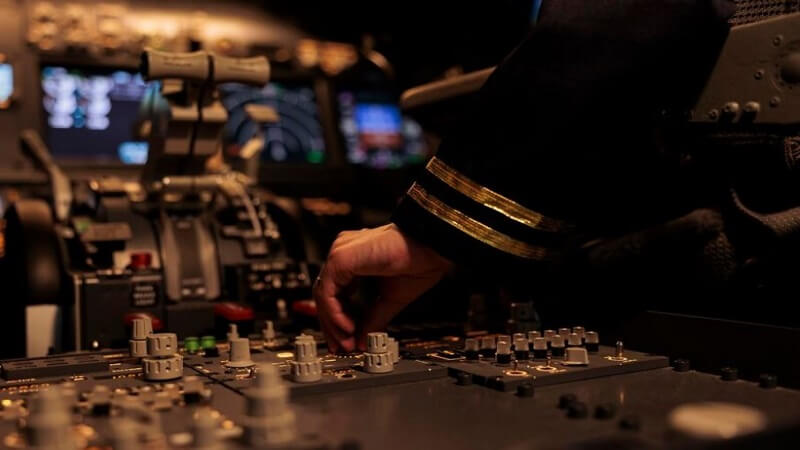In the vast expanse of the sky, where aircraft traverse with precision and passengers rely on seamless journeys, ensuring the safety and efficiency of flight operations stands as an indispensable imperative within the aerospace industry. Behind every successful flight lies a complex network of meticulous planning, rigorous protocols, and cutting-edge technology, all orchestrated to navigate through the challenges that the skies may present.
The Foundation of Safety
At the heart of every flight operation is safety. The aerospace industry is built upon a foundation of unwavering commitment to ensuring the well-being of passengers, crew, and cargo. Every aspect of flight operations, from pre-flight checks to post-flight inspections, is meticulously designed to mitigate risks and uphold the highest standards of safety.
Safety begins long before an aircraft takes to the skies. It starts with rigorous training programs for pilots, engineers, and ground staff, ensuring that each individual is equipped with the knowledge and skills necessary to handle any situation that may arise. Regular training sessions, simulations, and drills help maintain proficiency and readiness, allowing flight crews to respond swiftly and effectively to emergencies.
Furthermore, comprehensive maintenance schedules are implemented to keep aircraft in optimal condition. Routine inspections, repairs, and upgrades are conducted to identify and address any potential issues before they compromise safety. Advanced diagnostic tools and predictive maintenance techniques enable engineers to anticipate maintenance needs and prevent unforeseen failures, reducing the risk of in-flight malfunctions.
Harnessing Technology for Safety
With the evolution of technology, flight operations have become more reliable and safe. From advanced weather forecasting tools to sophisticated avionics systems, technological innovations in aviation have transformed the way aircraft are operated and managed. One such innovation is the implementation of artificial intelligence (AI) and machine learning algorithms.
These technologies allow airlines to analyze massive amounts of data in real-time, identifying patterns, anomalies, and potential hazards. By leveraging AI-driven predictive analytics, airlines can proactively manage risks, optimize routes, and enhance operational efficiency while maintaining the highest safety standards.
Additionally, pressure sensors are used in aircraft for various applications such as monitoring cabin pressure, measuring airflow, and detecting fuel tank pressure. The integration of drones into airspace also offers cost-effective solutions for various tasks such as surveillance, inspection, and cargo delivery with minimal human risk. However, strict regulations are required to ensure the safe and efficient integration of drones into the airspace.
Collaborative Approach to Safety
Ensuring safety in aerospace operations is not the sole responsibility of airlines or regulatory authorities; it requires a collaborative effort across the entire aviation ecosystem. Industry stakeholders, including manufacturers, service providers, air traffic controllers, and government agencies, must work together to address emerging challenges and foster a culture of safety.
Collaboration extends beyond national borders, as aviation is a global industry that transcends geopolitical boundaries. International standards and regulations, such as those set forth by the International Civil Aviation Organization (ICAO), provide a framework for harmonizing practices and promoting interoperability among nations. By adhering to common protocols and sharing best practices, the aviation community can enhance safety on a global scale.
Continuous Improvement and Adaptation
As the aerospace industry evolves, so too must its approach to safety. Continuous improvement and adaptation are essential to staying ahead of emerging threats and technological advancements. Aviation stakeholders must remain vigilant, constantly evaluating and refining their processes to address evolving risks and challenges.
Investments in research and development are critical to driving innovation and resilience in flight operations. By collaborating with academic institutions, research organizations, and industry partners, aerospace companies can leverage cutting-edge technologies and explore new methodologies to enhance safety and efficiency.
Furthermore, fostering a culture of transparency and accountability is paramount to maintaining trust and confidence in the aviation industry. Open communication channels, incident reporting systems, and thorough investigations help identify root causes of safety incidents and implement corrective measures to prevent recurrence.
Conclusion
In the dynamic and complex realm of aerospace, safeguarding flight operations requires a multifaceted approach that encompasses rigorous training, technological innovation, collaboration, and continuous improvement. By prioritizing safety above all else, the aviation industry can ensure that every journey takes passengers above and beyond, with the utmost confidence in the reliability and security of air travel. As we look to the future, let us remain steadfast in our commitment to excellence, striving to push the boundaries of safety and efficiency to new heights.
